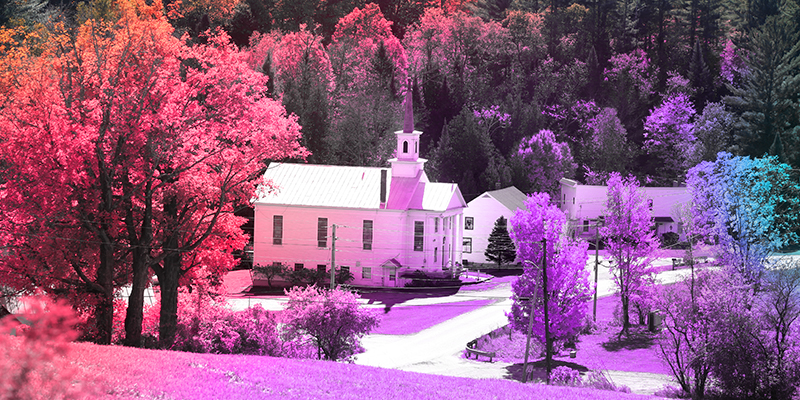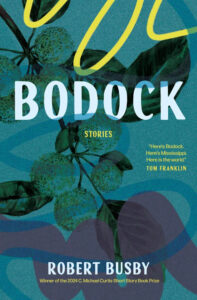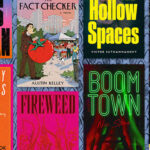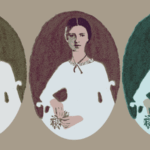My debut collection, Bodock: Stories, which mostly takes place in the eponymous town during the 1994 Mid-South Ice Storm, is heavily influenced by two Mississippi literary traditions: fictitious locales and a Southern Gothic aesthetic. This was probably inescapable: I grew up in north Mississippi, where the rolling, red clay hills inundate across the landscape like a Junior Kimbrough chord progression and can carry you forty minutes west down the highway to Yoknapatawpha or an hour or so east to Ace Atkins’ Tibbehah. Pick a southerly direction and you’re less than a day’s ride from Arrow Catcher (Lewis Nordan) or Mercury (Brad Watson) or Sparta (John Ball) or Bois Sauvage (Jesmyn Ward) or Clanton (John Grisham) or Tiger Tail (Tennessee Williams).
Not that Mississippi writers have a monopoly on using their inventive noggins to “[furnish] a plausible abode for the novel’s world of feeling,” according to Eudora Welty in her essay, “Place in Fiction.” Expand the radius beyond the Magnolia State and you might find yourself in Stay More, AR, or St. Petersburg, MO, or Port William, KY, or Westingtown, WI, or Thalin or Lonesome Dove, TX, or Derry or Castle Rock, ME, or across the pond to Middlemarch or even interdimensionally to Area X. Hell, you could even land in Coalfield—not the actual Coalfield in eastern Tennessee but the fictitious one Kevin Wilson writes about located in the middle of the state.
Anyway, without any discernible intention, I also ended up throwing about the whole gamut of literary genres into Bodock: Stories, a veritable hodgepodge of crime, suspense, violence, history, fable, horror, realism, surrealism, magical realism, dirty realism (i.e., grit lit), etc., that placed the collection operating in something like a Southern Gothic mode. And even when fictitious locales aren’t located below the Mason-Dixon, similar ingredients and others, when simmered in the cast iron Dutch oven of a parochial geography, become a sort of small town gothic, no matter what the zip code.
Here are eleven story collections that take place in fictitious towns and blend some combination of crime, romance, mystery, horror, death, dark humor, decay, the grotesque, the macabre, alienation, violence, poverty, etc., into their own recipe of small town gothic.
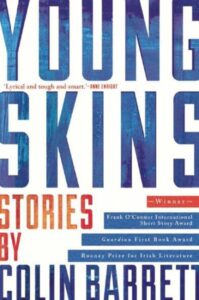
GLANBEIGH, IRELAND
Young Skins by Colin Barrett
Glanbeigh is a small town in rural Ireland, and Barrett’s collection—which won him the Frank O’Connor International Short Story Award, the Rooney Prize for Irish Literature, and the Guardian First Book Award—primarily views this desolate, fictional locale through the lens of its young, disillusioned adult populace who “have the run of the place.” The economic boom of the Celtic Tiger has passed, and what’s left is a grim, gritty landscape that can’t meet its inhabitants’ already bottomed-out expectations in both grand and mundane ways. In response, these folks love hard and live recklessly and bear the scars of their trials.
In perhaps the most crime-centric story of the bunch, a handler and enforcer for an organized crime family—a young father nearly estranged from his child and with few economic prospects—takes matters into his own hands in an effort to advance in the organization with, of course, devastating consequences. Hope isn’t entirely absent here, but its seeds can’t sustain for long in this barren landscape. Still, amongst the alcoholism, drug addiction, petty crimes, misdemeanors, murder, and acts of violence both random and calculated—told in uncomfortable, lyrical precision—the most devastating moments, perhaps, are when the characters commit acts of unpredictable kindness.
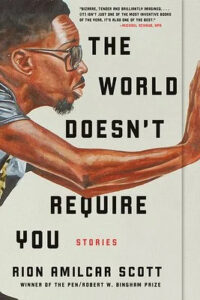
CROSS RIVER, MD
The World Doesn’t Require You by Rion Amilcar Scott
Cross River is a small, fictional town in Maryland that rose from the country’s only successful slave revolt in the early nineteenth century. In surreal, lyrical, darkly comical prose, Pen/Robert W. Bingham Prize winner Rion Amilcar Scott weaves a tapestry of genres—horror, science fiction, fantasy, realism, magical realism, fable, etc.—into a mythical universe where water women lure men to their watery graves and screecher birds darken the sky as they pluck Cross River inhabitants in a horrific sort of periodic, sacrificial harvest and God’s last son starts a sort of religious, musical cult in the Ruins of former plantations and enslaved, sentient Robot Personal Helpers organize a Second Great Insurrection, only to lose their invented language in the ensuing Electric Holocaust. Also, a bystander gets swept up in an Underground Railroad reenactment.
The final story—a novella of a sort of bureaucratic horror noir involving competing academics at Freedman’s University—is a metatexual, intertextual fever dream in which Scott uses lyrical realism, class syllabi, email correspondence, course descriptions, PowerPoint presentations, footnotes, and more to further explore some of the larger themes of the book—race, identity, oppression, misogyny, religion, absurdity, and violence—while providing an alternative framework for some of Cross River’s mythologies and literary traditions.
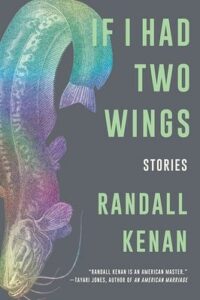
TIMS CREEK, NC
If I Had Two Wings by Randall Kenan
The late Randall Kenan first introduced us to his fictional stamp of North Carolina territory with his 1989 novel, A Visitation of Spirits. The story follows a gay Black teenager in the small town of Tims Creek as he wrestles with identity and sexuality in a fundamentalist Baptist home. The novel lays the groundwork for themes Kenan would continue to explore in his only two other works of fiction, both story collections: Let the Dead Bury Their Dead (1992) and If I Had Two Wings (2020). This intersection, or perhaps even confrontation, of queer life, rural customs, and religious traditions seemed to be one of Kenan’s most prominent themes, a framework he employed often in If I Had Two Wings to explore love, family, acceptance, marginalization, community, the expansive—often oppressive—shadow of history, and even the supernatural.
Of course, you can’t throw a stone in a gothic narrative and not benignly impale a ghost’s permeable, translucent ether—and the same applies to the story, “Resurrection Hardware or, Lard Promises.” The narrator, also named Randall, is a gay Black man who returns home to Tims Creek to renovate a centuries-old farmhouse with his partner, Siddiq. There, they regularly encounter the ghosts of runaway slaves and the family of Quakers who tried, apparently unsuccessfully, to help the enslaved escape. The spectral residency drives Randall’s boyfriend away, but the narrator, in a humorous, touching display of manners, offers the ghosts breakfast. Hard to get more Southern gothic than that.
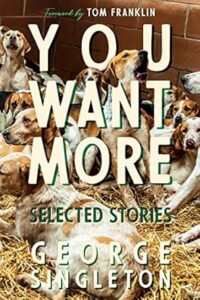
FORTY-FIVE, GRUEL, & CALLOUSTOWN, SC
You Want More: Selected Stories by George Singleton
George Singleton’s got so many stories brewing inside him that he had to create three (three!) fictional towns across eight story collections (so far!) just to give all his quirky, often anachronistic characters a home (eat that, Faulkner!). All three locales—Forty-Five, Gruel, and Calloustown—are found in Singleton’s native South Carolina. All three towns are weird and wonderful and darkly humorous and chock full of pathos and in some varying state of decline that has caused most of the “businesses on the square to evaporate.” Calloustown even holds a chip on its shoulder because General William Tecumseh Sherman didn’t think the town good enough to burn during his March to the Sea.
Singleton’s narrators are also broken and alienated and lonely and struggling and have just enough education to notice the absurdities around them but not always enough sense to cut their losses. If all of that sounds depressing, it kind of is, except that Singleton has a singular genius for slow-boiling misery in a pot of gut-busting humor so that you’re laughing vigorously and continuously enough that you don’t even realize you’ve had your damn heart broken. If nothing else, pick up this collection just to read and understand why a rising middle schooler actually says this sentence about his classmates to his teacher’s husband: “They’re fucking each other’s armpits upstairs with your wife’s Noxzema.”

CROSBY, ME
Olive Kitteridge by Elizabeth Strout
Elizabeth Strout won the Pulitzer Prize for Olive Kitteridge, a novel-in-stories in which the eponymous protagonist-of-sorts weaves her way into and through thirteen short stories set in fictional Crosby, Maine. This small town gothic tackles subjects like unrequited love, unfulfilled dreams, extramarital affairs, aging, the imminence of death, drug use of varying degrees, and a changing—in some characters’ opinions, decaying—town in this vividly gray portrait of the human condition and finding hope, or at least small wins, in bleak domesticity. No literal ghosts populate Crosby, but the characters in these stories are haunted by hubris, the specters of past or possible or simply imagined romances, hallucinations and mental illness, parents who have committed suicide, past versions of themselves they can’t admit to or reconcile with, and their own propensity to attempt, or at least contemplate, suicide.
While none of the narratives in this collection are straightforward crime stories in that some illegal activity is central to the plot, a few stories do dabble in the genre. For example, in “Criminal,” a wife begins to develop kleptomaniac and pyromaniac tendencies as a response to her condescending husband and the recent death of her authoritative father and may be premeditating the arson of her doctor’s office, where she’s stolen a vase and magazine from the waiting room. And in “A Different Road,” Olive and her otherwise affable husband, Henry, are taken hostage in an ER bathroom where they eventually speak versions of their own truths to each other regarding their son’s estrangement that will spread quiet, disruptive ripples across their relationship.
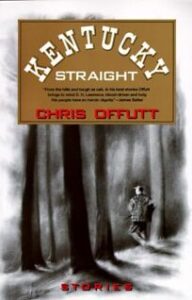
ROCKSALT, KY
Kentucky Straight by Chris Offutt
The stories in Kentucky Straight—collected and published in 1992—involve marijuana farmers, rural pharmacists, gamblers, coal miners, scheming preachers, and alienated dreamers who are either staving off or succumbing to the inevitable stagnation that plague most of the residents of this innominate hamlet near Rocksalt, KY. The name of the proximate fictional town is important: the material, rock salt, is both constructive and destructive. It can fortify food against rot, dissolve ice on a porch or driveway, lower the melting point of water, or serve as a key component in transforming milk, sugar, and cream into a batch of homemade ice cream.
But rock salt can also erode against fortification. In deceivingly simple, taut lyricism, Kentucky native Chris Offutt—one of the earliest prophets of the grit lit tradition—writes honestly, powerfully, and empathetically of these men and women who struggle to fortify themselves against desires they don’t have the experience, vocabulary, or courage to either articulate or contextualize within the hardscrabble hand they’ve been dealt. And as a sort of defense mechanism against a larger world they can’t imagine and a home in which survival isn’t always simple, the folks inhabiting the ridges and bluffs and creeks declare a sort of stubborn allegiance to their circumstances—even as the geographic and economic landscapes bite and chip eat away at them.
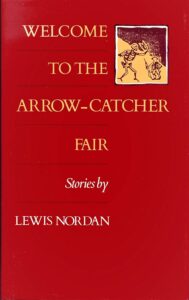
ARROW CATCHER, MS:
Welcome to the Arrow-Catcher Fair by Lewis Nordan
I’m not certain I can say anything about Lewis Nordan that anyone else who appreciates this Mississippi bard of the surreal hasn’t already said. Perhaps: Good grief. Or better yet: Funny grief. It’s not that Buddy Nordan believed grief to be hilarious. Or maybe he did. I wouldn’t honestly know really. But he wrote as if he recognized that grief was at least inevitable and that perhaps there was something absurdly, or even optimistically, funny about that.
Nordan saw all the grotesqueries of the South—the madness and eccentricity and violence and loss and affection and revulsion—through a beautiful, magical, big-hearted lens that was entirely his own, where octogenarians pluck loosed arrows from the air and where a mortician “tried also not to think of his wife’s body, either of them, the regular, beautiful, sexy young body that he craved, or the other, the one she owned, the leathery, mummified corpse that had stood in the broom closet for sixty-four years, the pencil-peddler, Old Milt.” Music of the Swamp might be my favorite, but Welcome to the Arrow-Catcher was my first. Still, it’s home is not in this collection—instead Nordan’s subsequent book, The All-Girl Football Team—but one of the most beautiful, heart-breaking, wonderfully depressing, and wholly uncomfortable stories I’ve ever read (by Nordan or anyone) is “The Attendant,” about a young caretaker, a quadriplegic, and the clinical-but-human intimacy between them.
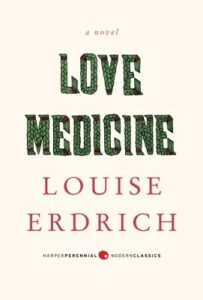
ARGUS, ND:
Love Medicine by Louise Erdrich
Damn, I remember loving and being absolutely devastated by this book the first time I read it. I was first introduced to Louise Erdrich in an undergraduate workshop at the University of Mississippi back in 2005, and two of her stories we studied—”Saint Marie” and “The Red Convertible”—appear in this collection (or, for the purposes of this article, novel-in-stories). Love Medicine won the National Book Critics Circle Award and is devastating in its portrayal of a handful of Ojibwe families—including the Kashpaws and the Lamartines—living on a reservation near the fictional town of Argus, North Dakota, in the twentieth century.
Erdrich employs a number of elements inherent to both Indigenous literature and experience and the small town gothic—including folklore, mythology, familial ghosts, oral storytelling, gritty realism, poverty, romance, horror, and decay—to explore themes of identify, generational trauma, reconciling heritage and cultural loss in the face of colonialism and forced assimilation, and even love triangles. It’s a hell of a rich, textured, layered book, and Erdrich’s masterful storytelling makes it damn near impossible to demarcate the line between humor and tragedy throughout these stories (and I mean that in the best way). Perhaps nowhere is this more evident in the novel than in its title story, “Love Medicine.”
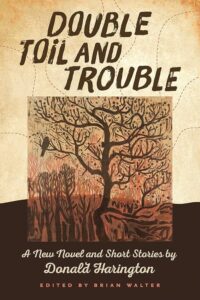
STAY MORE, AR
Double Toil and Trouble by Donald Harington
Full disclosure: I haven’t yet gotten my hands on this collection—it was published in August 2020 by University of Arkansas Press—so I haven’t actually read it. But I include it here for these reasons: The book’s full name includes the subtitle A New Novel and Short Stories and includes no fewer than four previously unpublished stories, so it is technically a collection of something.
And I’ll definitely use that technicality to include Donald Harington, a criminally underrated and underread American novelist, on this list if for no other reason than to encourage more folks to read The Architecture of the Arkansas Ozarks, which is not an academic text or coffee table tome but instead a mythical, magical, surreal folklore dreamscape epic similar to One Hundred Years of Solitude by way of Faulkner. Architecture uses the evolution of vernacular structures in northern Arkansas as a framework for telling the story of rise and decline of the Ingledew family, who founded the town of Stay More. Further, I compel anyone reading this to find a better demonym—that is, a moniker for a group of people in relation to the place they inhabit—than Stay Morons.
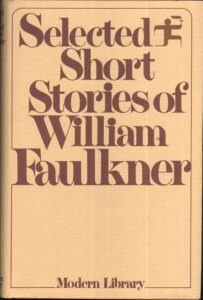
JEFFERSON (YOKNAPATAWPHA), MS
Selected Short Stories of William Faulkner
Faulkner didn’t invent the fictional small town, but his Yoknapatawpha is the barometer by which most every subsequent fictitious locale is measured or, at least, compared to. Same goes for Southern Gothic—if you happen to spin a macabre yarn about an alienated, reclusive human prone to eccentricities as a response to parental authoritarianism, abandonment, and unrequited romance in a small, insular, even claustrophobic environment, prepare for comparisons to the epitome of the form, “A Rose for Emily.”
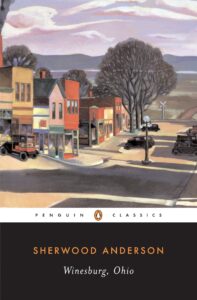 Version 1.0.0
Version 1.0.0
WINESBURG, OH:
Winesburg, Ohio by Sherwood Anderson
Sherwood Anderson originally submitted his manuscript—which used a “new looseness of form,” in this case, a novel(-in-stories)—with the name The Book of the Grotesque, which didn’t make the cut but did survive as the title of the introduction to the book. In this introduction, an elderly writer is having his bed raised to the level of the window by a carpenter so the writer can see “the trees when he awoke in the morning.” While recalling his experiences in the Civil War to the writer, the carpenter weeps, reminding the writer of all the sad, unusual folks he’d known in his own life.
Like the carpenter to the writer, the “grotesque” characters in Winesburg tell their stories to the young reporter, George Willard. These encounters with lonely, alienated “lives flowing past each other”—whole existences of unfulfilled yearning and desires, suppressed sexuality, failed dreams, and the like—became the basis for Winesburg, Ohio, in which Anderson interpreted and employed traditional gothic elements into a more modern, small town context that would go on to influence at least one Southern Gothic practitioner—William Faulkner.
***

